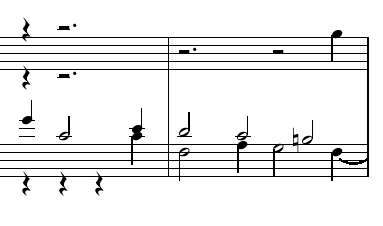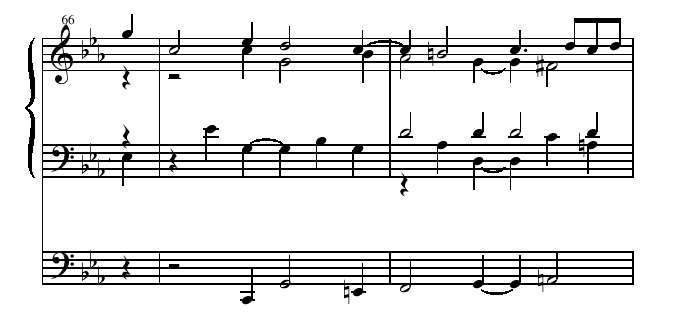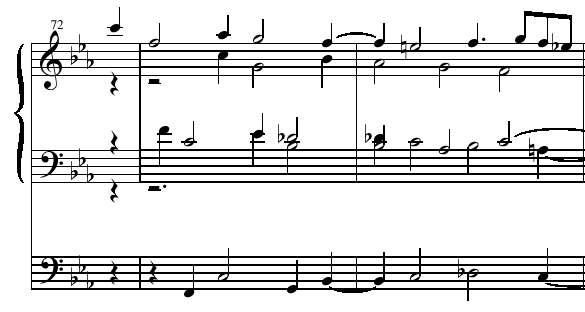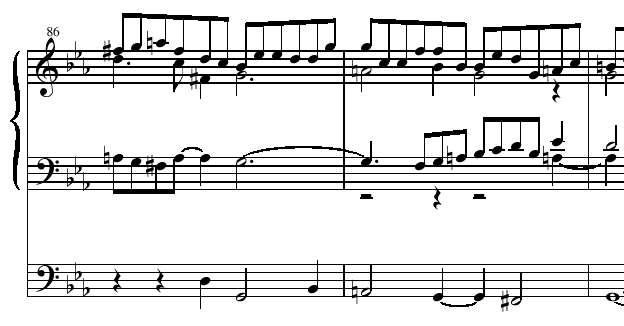Completion of J.S. Bach's Fugue in C minor


The Fugue in C minor, an 5-voiced organ fugue that followed a fantasia in the same key, was completed by Bach only as far as the exposition, an episode, and the beginning of a stretto entry of the subject. The subject:

Seems deliberately crafted to be malleable enough for stretto, inversion, and other contrapuntal manipulation, but distinctive enough to be recognized by the hearer.
Near the end of the fragment, Bach employed an interesting half-cadence:

What makes this interesting is not only the fact that the alto voice crosses over both the soprano and tenor voices, but the hidden parallel octaves between the top and bottom voices are artfully hidden from the ear. This is because Bach "trained" the listener, in the previous measures, to pick out the unusually large upward leap (in this case, the c to the a-natural) followed by a large downward leap (a-natural to b-natural, in this case). Thus, the ear hears the line going from the a-natural to the b-natural, despite the fact that it leaps two other voices to do it.
Following this half-cadence is a stretto passage that dispenses with the opening counter-subject:

but introduces a new one:

I decided to treat this as a subject rather than a counter-subject in my completion, although its entry is not really typical of a new subject. Thus, the completed work would be a triple fugue of sorts, after I added a third subject:

I originally planned to have a new set of entries with an inverted subject/counter subject from the exposition, followed by an inverted stretto. It seemed a little tedious, though, so I skipped the initial entries and went straight to the stretto:

I then introduced a new stretto passage that combined the rectus and inversus:

Finally, I brought in an extremely close stretto, with the pedal playing a somewhat mangled version of the inversion.

Near the end of the piece I brought the three subjects together:

This is typical of the final section of a triple fugue, although the structure of the fugue does not follow the convention. The second subject is preceded by a half cadence rather than a cadence, and is not treated as a true subject anyway, but a counter-subject. Nevertheless, Bach himself was seldom a slave to convention. In studying the structures of some of his organ fugues, I was surprised to find very little commonality. Bach did not fall into the trap of repeating comfortable, basic patterns as he built his catalog of organ fugues, but seemed to strive for something different each time. I think that my completion, therefore, is true to the spirit of Bach.